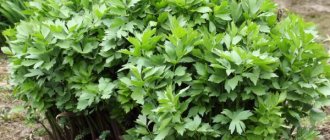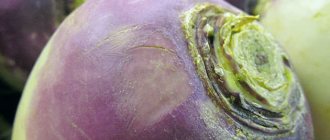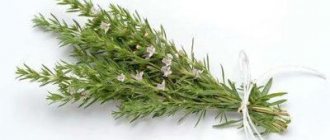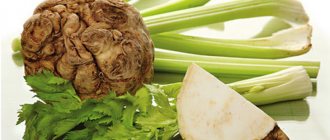What is celery?
It is a green vegetable grown for its aromatic and juicy stems, roots and leaves. It is in demand mainly as a seasoning with a characteristic strong spicy aroma and a pleasant bitter-sweet taste.
All parts of celery are edible - leaves, roots, stalks and seeds. Particularly popular in European and Asian cuisine.
What celery looks like - photo
Celery petioles
The root appears hairy, bumpy and brown. However, if you clean it, it becomes smooth and white.
Celery seeds are similar in appearance to caraway seeds. They have a dark brown color, an oblong shape with thin vertical ribs, and a very strong aroma.
general description
This is a fairly powerful, up to 1 m in height, annual or biennial plant with large leaves on long petioles, branched stems and a powerful root system.
Belongs to the Apiaceae family, which also includes parsley, carrots, fennel, coriander, parsnips, caraway and others. Its other names: celery, sweet parsley.
The most famous type is celery (Apium graveolens).
There are two other important types of celery in this plant variety:
- Root - has a large, fleshy root that is especially prized for its unique nut-like flavor. The rhizome is round in shape, the size of an apple, with a very strong pleasant aroma. The scientific name of this species is Apium graveolens var. Rapaceum.
- Leafy (Apium graveolens var. secalinum), which is very similar to parsley, but tastes like celery. Forms a developed rosette of delicate leaves of bright green color.
No matter what type you choose to buy or grow, benefits can be found in all parts of the plant, including leaves, stems, roots and seeds. They are all used for food, both fresh and dried.
A little about the history and features of the product
Celery stalks belong to a biennial plant of the Apiaceae family. They have a strong aroma and a bittersweet taste with a hint of spice. The stems have juicy fleshy petioles up to 4 cm thick and up to 100 cm high. The first mention of it was recorded in 1623 in Mediterranean countries. The vegetable was cultivated in Ancient Greece, Rome and Egypt. The plant began to be cultivated in Russia only during the reign of Catherine II.
How to choose celery
In the store, buy fresh, elastic leaves and bright green petioles. Avoid wrinkled stems, wilted, yellow or spoiled leaves. The darker the color, the stronger the aroma.
High-quality celery seeds are grayish-green or light brown in color, uniform in size, with a strong characteristic odor without foreign or chemical tones. The spice should not contain rotten, moldy or insect-damaged fruits, as well as a large number of stalks, stems, leaves, split fruits, and debris. The seeds should not crumble when pressed.
Celery root may not look very pretty, but it's delicious and versatile. Choose roots that are firm and heavy for their size. Small ones are more tender than large ones, which can be very fibrous. If there are greens or stems at the top, they should be fresh, not dried out, slimy or wilted.
Celery is known to be exposed to many pesticides. Be sure to wash it thoroughly. Buy organic products whenever possible.
Selection and preparation of a landing site
To plant petiole celery, you need to find a well-lit area that is protected from the chilly northern winds. Although, in fairness, it should be noted that in slightly shaded beds, celery grows more fragrant and juicy.
Growing celery requires good lighting.
The soil in a plot intended for growing celery must be neutral, loose, fertile, well aerated and drained. The best option is light loam or nutrient-rich sandy loam.
Attention! The best predecessors for stalked celery plantings are tomatoes, cabbage, cucumbers or potatoes. Celery seedlings cannot be planted in beds where umbrella vegetable crops grew for the next two years.
Heavy, depleted soil is prepared in the fall. To do this, for every sq. m of beds, add a glass of crushed ash, a bucket of compost and half a matchbox of superphosphate, after which the soil is dug up deeply.
After the snow melts, the ridges intended for celery are dug up again and at the same time mineral complex fertilizers (30g/m²) are applied to them.
Celery seeds do not germinate well, so they need preparation
How and how much to store
Celery root retains its properties well for several months if kept in a cool, dark place. Place it in the refrigerator, wrapped in a plastic bag. Do not wash or peel celery root before storing - peeled vegetables quickly oxidize and spoil. Sticky bits of soil help root vegetables stay fresh longer.
Celery greens should not be stored at room temperature, as moisture will quickly evaporate from them, which will lead to wilting within a few hours. Place the celery in the vegetable drawer of the refrigerator for up to two weeks.
All parts of the plant retain their scent well when dried. At home, it is better to dry the leaves in the shade, cut the roots into strips and dry them in an oven at low temperature or in an electric vegetable dryer. The shelf life of dried celery is up to two years, if stored in hermetically sealed containers.
It is convenient to store the petioles frozen.
How to freeze
- Wash it thoroughly to remove dirt. Remove rough parts and those that have changed color.
- Cut the stalks into a shape that you can easily use in soups or stews. This will make it easier to work with frozen products in the future.
- Plunge the chopped celery into boiling water for three minutes, then immediately cool in a bowl of ice water. You can skip this step if you use up the frozen celery within two months. But for longer storage, blanching will stop the enzymatic processes in the plant and destroy bacteria and mold.
- Place the celery on a baking sheet and place in the freezer for several hours.
- Pack it for freezer storage: place it in a plastic bag or plastic container. Think ahead about how you'll use it and pack it in portions that will fit your future meals. Be sure to label the date you froze the celery.
If frozen this way, use it within 12-18 months.
Store frozen celery that has not been blanched for more than two months.
How to grow in the country?
To cultivate the crop, you will need to carry out a number of agrotechnical measures, which are described in detail below.
The soil
To grow celery, you need to start preparing the bed at the end of February or beginning of March , at the same time you can start sowing plants for seedlings.
- You need to dig wide furrows, 40 cm wide and 30 cm deep.
- Fill them with manure or compost.
- Sprinkle a small amount of soil on top.
The pH of the soil should be between 6.5-7.5 . If the PH value is higher in the area where the crop is supposed to be cultivated, then liming will be required. It is better to hold the event in the fall using dolomite flour.
If you prepare soil for seedlings yourself, you will need to mix:
- 3 parts peat;
- 1 part humus;
- 1 part ash;
- and a small amount of sand.
You can also purchase ready-made soil in the store intended for growing seedlings.
Seed treatment before sowing
Before you start sowing petiole celery seedlings, you need to treat the seeds. It is necessary to resort to such an event only if they have not gone through this process in the factory.
If the packaging of the purchased celery variety indicates that the seeds have been treated (pickled), then there is no need to do this yourself. If the seeds are sown as seedlings, for example, from your own plot, then it is recommended to treat them in a weak solution of potassium permanganate or phytosporin.
The seeds are placed in a small piece of gauze and left in the solution for 15-20 minutes , after which they are washed with running water. An equally important aspect of growing seedlings is soaking the seeds in hot water. This manipulation will help the seeds get rid of excess essential oils and speed up germination. The seeds are taken out after the water has cooled, washed and immersed in water again, but for 3 days. After this, you can sow seedlings.
Timing and technology of planting seedlings
You can start sowing celery for seedlings in late February - early March after soaking the seeds. You can germinate them in two ways:
- The swollen seeds are laid out on a damp paper napkin or gauze and left in a dark place with a temperature of 20-22 degrees. The room should be well ventilated so that the seeds do not rot or mold. The seed must be moistened and not allowed to dry out.
- The second method of germination is in a container with sawdust. Use a glass container into which wet sawdust is poured, with seed along with sand on top. There is no need to close the container, just send it to a warm, lit place and maintain a sufficient level of humidity for germination.
Regardless of the method of growing seedlings, when 2-3 true leaves appear on a young plant, they are placed in different cups. During transplantation, you need to ensure that the plant’s rosette is not covered with soil. Seedlings are left in a well-lit, warm place .
You can plant seedlings in open ground in late April - early May. It is recommended to harden the plants first by placing them on the balcony or outside for 2-3 hours for 3-4 days.
Features of growing in open ground from seeds
Is it possible to plant celery directly in open ground and how to do it correctly? If you want to sow celery directly into open ground with seeds, then you should know that the first shoots will appear only after about 30 days .
It is important to sow in already prepared soil and then monitor the soil moisture in the area. When sowing celery seeds in open ground, you must immediately maintain a distance of 15-20 cm between plants.
Use of celery in cooking
This flavorful vegetable is so versatile that all parts can be used to create a delicious dish.
How to prepare celery stalks and leaves:
- Separate the stems from the bunch and wash them in cold water to remove any contaminants, fungicides and pesticides.
- Since this spice contains a lot of fiber, remove the tough ends of the petioles (the large white section at the bottom of each stem).
- Using a vegetable peeler, peel each stem while holding the base on a cutting board. If the petiole is quite tender, skip this step.
- Cut the celery into pieces of the required size.
If your celery greens are a little wilted, you can revive them by soaking them in ice water for an hour.
How to peel celery root:
- Place the celery root on its side on a cutting board and cut off the top and bottom.
- Place the root vertically. It must be sustainable.
- Cut off the remaining peel in vertical strips from top to bottom, following the shape of the root. Continue cutting until all the skin is removed.
- Cut the root into cubes or slices and rinse quickly in water and lemon or orange juice to prevent discoloration (oxidation).
How much and when to add
The smell of celery in large quantities can “overwhelm” all other seasonings, so it is added sparingly to the mixture.
Like other fresh spices, it is better to add petioles and herbs to dishes 10-15 minutes before readiness, stems - coarsely chopped, leaves - tied in a bunch.
In dishes that require long-term cooking, it is more convenient to add celery roots, cut into large pieces, in the middle and towards the end of cooking.
What dishes do they put it in?
This flavorful vegetable is so versatile that all parts can be used to create a delicious dish. Here are some tips on where to add celery:
- Fresh leaves, roots and stems for salads and stews.
- Puree soups made from celery root vegetables are very popular.
- Used as a side dish in various dishes. It goes well with vegetables such as potatoes, carrots, legumes, and poultry.
- Fresh leaves, petioles and roots - when preparing soups and sauces.
- Use the tender leaves as you would any herb: finely chop, tear with your hands, or leave whole. Toss them in green salads or vinaigrettes, stir-fries, soups and sauces. Decorate the dish with twigs before serving.
- Try celery juice combined with cucumber, kale and apple for a refreshing drink. This vegetable adds a vibrant aroma and flavor without being too sweet. Also try it in cocktails: it goes well with tequila or gin.
- Roast thinly sliced celery root with chicken, beef or turkey. It cooks quickly but remains crispy.
- Add crushed root to mashed potatoes for a savory taste and aroma.
- The best uses for frozen celery stalks are for stuffing, soups, stews and sauces. You can add it to a dish straight from the freezer without thawing.
- Grated roots and chopped celery greens are mixed with chopped sweet peppers, carrots, parsley, and 20% salt is added to the total weight of the vegetable mixture. The result is a universal seasoning that stores well in the refrigerator. It is used instead of salt to season potato and cereal soups.
- Seasonings with celery seeds go well with grilled meats (especially pork ribs), tomato and vegetable soups, meat and chicken broths, omelettes and marinades.
Celery soup (for weight loss) – video
Salad with celery and apple – video
Care tips and advice
After planting the crop in open ground, you will need to provide it with proper care. The main points that are important to observe are as follows:
- Regular watering . The event is held based on the needs of culture and weather conditions. It is important to control soil moisture levels. The formation of a dry crust should not be allowed, but overmoistening will also negatively affect the condition of the plants.
- Feeding . The crop needs to be fertilized every 10 days. It is recommended to use organic fertilizers (manure, compost).
- Hilling up . The event is carried out only for those varieties of stalked celery that can bleach on their own. Self-bleaching varieties hill up once every 3-4 weeks as the bushes grow. During hilling, you should ensure that the soil does not fall on the parts of the stem from which the leaves are formed.
- Removal of weeds . Such an event is necessary not only for the good development of the crop, but also to prevent the appearance of mollusks that damage celery.
By choosing a suitable variety for cultivation in a certain climatic zone, properly preparing the seeds and planting seedlings in the ground, you can get a good harvest of celery. Do not neglect the recommended technology for growing the crop and there will be enough celery for the table, for sale, and for storage.
Chemical composition
Nutritional value of fresh celery (Apium graveolens) per 100 g.
| Name | Quantity | Percentage of daily value, % |
| Energy value (calorie content) | 16 Kcal | |
| Carbohydrates | 3 g | 5,5 |
| Protein | 3.46 g | 6 |
| Fats | 1.12 g | 4,5 |
| Dietary fiber | 2.10 g | 5,5 |
| Folates | 36 mcg | 9 |
| Niacin | 0.320 mg | 2 |
| Pantothenic acid | 0.246 mg | 5 |
| Pyridoxine | 0.074 mg | 6 |
| Riboflavin | 0.57 mg | 4 |
| Thiamine | 0.021 mg | 2 |
| Vitamin A | 449 IU | 15 |
| Vitamin C | 3.1 mg | 5 |
| Vitamin K | 29.3 mcg | 24 |
| Sodium | 80 mg | 5 |
| Potassium | 260 mg | 5,5 |
| Calcium | 40 mg | 4 |
| Copper | 0.35 mg | 4 |
| Iron | 0.20 mg | 2,5 |
| Magnesium | 11 mg | 3 |
| Manganese | 0.103 mg | 4,5 |
| Phosphorus | 24 mg | 3 |
| Zinc | 0.13 mg | 1 |
| Carotene-ß | 270 mcg | — |
| Lutein-zeaxanthin | 283 mcg | — |
Which varieties to choose for different growing regions
Our country has several climatic zones, so when choosing a variety for planting, the timing of its ripening is taken into account: early, mid-ripening, late.
In the central and southern regions it is customary to grow early and late varieties. The early ones will be used to sell greens at the market, the later ones will have time to ripen and will be well stored.
In the northern regions, only early and mid-season varieties are traditionally planted. Due to the onset of cold weather, the later ones do not ripen. Do not plant varieties that are too early - they are susceptible to frost. But if you plant them in a greenhouse and follow the cultivation conditions, the harvest is the same as in central Russia.
The following varieties are suitable for the Urals and Siberia: from root varieties - Russian Size and Egor, from leaf and petiole varieties - all listed above.
For central Russia, northeastern and central regions: from root varieties - Diamant and Yablochny, from leaf and petiole varieties - all the varieties listed above.
Health Benefits
Celery is one of the lowest calorie plants. The leaves contain only 16 calories per 100g and are also high in insoluble fiber (fiber), which is beneficial for digestion. When combined with other weight loss methods, celery helps reduce weight and regulate blood cholesterol levels.
Experts say that celery has negative calories. This means that eating this vegetable burns more calories than it contains. This property is explained by the high content of dietary fiber, the digestion of which requires calories. Because of this, celery is considered one of the best foods for weight loss.
Leaves and petioles
Beneficial properties that you will get from consuming celery:
- Cancer prevention. Polyacetylene compounds present in celery are chemically protective and prevent the occurrence of cancers, particularly breast, lung, intestinal, colon, pancreatic and leukemia. It boosts the immune system, thereby preventing mutated cells from proliferating and forming tumors.
- Source of flavonoids. The bioactive flavonoids in celery, apigenin and luteolin, fight free radicals in the body and kill cancer cells, depriving them of food to grow and reproduce. The antioxidant flavonoids and polyphenolic phytonutrients in celery improve liver, skin, eye and mental health.
- Prevents cardiovascular diseases. Pharmacological studies have shown that celery's beneficial antioxidant and anti-inflammatory properties improve blood pressure and cholesterol levels, and prevent many types of heart disease.
- Reduces blood pressure. Modern scientific research confirms the beneficial properties of celery for lowering blood pressure, which have long been used in folk medicine. This is due to its potassium and phthalide content, compounds that relax the muscles around the arteries. Coumarin, another antioxidant in celery, enhances the activity of white blood cells. Celery has a diuretic effect, so it plays a role in eliminating excess body fluid.
Seeds
- Celery seeds contain limonene, coumarin and apigenin. They provide health benefits by fighting inflammation, which increases the risk of cancer, heart disease and other problems.
- One teaspoon of the seeds of this spice provides 35 mg of calcium and 0.9 mg of iron, as well as 0.5 mg of manganese. The mineral content is relatively low compared to the daily value, but quite significant considering the small number of seeds.
- Celery seeds are rich in flavonoids. These are antioxidants that provide pigmentation in plants and prevent cell damage.
Used to treat conditions such as:
- Arthritis.
- Gout.
- Muscle spasms.
- Anxiety.
- High blood pressure.
Research also shows that celery seed is an effective mosquito repellent.
Variety of petiole celery varieties
This species uses the stems for food, which is why it is sometimes called stem. It does not form a pronounced tuber; the root system consists of fibrous, well-developed roots. Petiole celery forms fleshy, juicy stems in the first year of cultivation. It is at this time that they need to be cut off. If celery is not harvested promptly, hard fibers will form in the stalks. Petiolate species prefer nutritious, loose soil. On poor soil, the vegetable grower will receive thin, weak petioles. Also, areas with strong lighting are not suitable for them; it is better to select slightly shaded areas for planting, for example, under trees. In the second year, the plant produces flower stalks. The varieties are cross-pollinated and lose their distinct characteristics. Therefore, in the second year, the beds should be separated by sufficient distance. Petioles are used not only in cooking, but also in cosmetology and traditional medicine recipes. The variety of varieties allows you to prepare dishes with different tastes and aroma. To be convinced of the benefits of culture, it is enough to list the useful components:
- B vitamins;
- mineral salts;
- essential oils;
- carotene;
- vitamin C;
- flavonoids;
- magnesium, potassium, iron, sodium.
This is an incomplete list of substances that bring invaluable benefits to the human body. Cooks not only stew and pickle petioles, but also freeze them, pickle them, and prepare juice or cocktails. The stems of the vegetable contain fiber, which is slowly digested, creating a long-lasting feeling of fullness.
Attention! Bleached or light green stalks of celery varieties have a sweetish taste, while dark green and reddish stalks have a piquant bitterness.
Petiole species should be used with caution by people with problems of the genitourinary system and expectant mothers.
Preparing the soil for sowing seeds for seedlings
Celery is sown in loose, moist soil
Root and petiole celery is sown at the end of winter, beginning of spring. But if late varieties were selected, they are sown even earlier.
Soil for the plant can be purchased at the store, but if you decide to prepare the soil mixture yourself, you need to take equal amounts of:
- sand
- humus
- leaf soil
- peat
The second option for soil mixture is vermicompost and sand in a 1:1 ratio.
Some gardeners prepare the soil for seedlings from their plot in the fall. During sowing, it is recommended to add humus and sand to this soil.
As with any other crop, soil for celery must be disinfected using one of the well-known methods:
- calcination in the oven, microwave
- freezing
- boiling water
- solution of potassium permanganate, etc.
These preventive measures reduce the risk of plant infection by diseases and pests.
To 10 kg of finished, treated soil, you can add 100 g of wood ash, 20 g of urea.
The soil is filled in the container 2 cm short of the edge. The soil is moistened before sowing.
Application
Celery is a crop in which all parts of the plant are eaten.
Its vegetative parts are bittersweet to taste. They have a pleasant aroma. The taste may vary depending on the variety. The roots and seeds of the vegetable can be dried and used fresh. Leaves - freeze.
Selera can be consumed fresh, dried, or pickled.
The dried parts are part of the spice mixture. Celery stalks are stewed, fried, and prepared into salads.
It is believed that celery is best added to vegetable dishes from:
- eggplant
- cabbage
- beans
- tomatoes
- potatoes
- carrots
The vegetable is often combined with meat, mushrooms, and fish. The root vegetable can improve the taste of sauces, soups, egg dishes, and salads.
The seeds are used to make celery salt or to add flavor to table salt.
Celery is a low-calorie product . 100 g of stems and leaves contain only 12-16 kcal, roots - 32 kcal. Therefore, it is often used in dietary nutrition.
Vegetables can be consumed no more than 150 g per day.
Care
Celery is a crop that requires regular watering and additional nutrition. The area between the rows of plants must be loosened, and sprouted weeds must be removed.
The soil under young celery is loosened once every 2 weeks.
You need to make sure that after watering, an earthen crust does not form over the roots. It is easiest to care for vegetables whose beds are covered with a layer of mulch: straw, peat, sawdust, mown grass, etc.
The plant itself is considered not demanding in terms of self-care.
Top dressing
To feed celery, it is best to choose organic fertilizers in liquid form. For example, a solution of cow manure (1:5), bird droppings (1:10), nettle infusion (1:9). To water 1 m2, use 1 liter of fertilizer.
If the choice fell on mineral fertilizers, you can use complex preparations. For example, 10 days after planting seedlings in a permanent place of growth, they can be fed with 20 g of nitrophoska, dissolving it in 10 liters of water. In the future, vegetables are fertilized once every 2 weeks.
There is an opinion that celery should not be planted in soil with excess fertilizer, as this prolongs plant growth
If the plants have a clear lack of nitrogen - the leaves turn pale, you can add 5 g of urea under the celery, diluting it in 10 liters of water. During the entire growing season, nitrogen fertilizers can be used no more than 2-3 times.
Watering
Celery is watered at the root
Lack of moisture can lead to the formation of coarse, fibrous vegetative parts of the plant. Watering for celery should be moderate; on average, 30-40 liters of water are needed per 1 m2. The soil is moistened as it dries with warm, settled water. Excess water is also detrimental to plantings.
Diseases and pests
Excessive amounts of water lead to fungal diseases affecting celery.
The most common vegetable diseases:
- bacterial spot
- blackleg
- late burn (septoria)
- mosaic virus
- core rot
- scab
- white rot (sclerotinia)
In order to prevent infection, it is necessary to strictly follow the rules of planting and caring for plants. Most often, rot affects plantings with waterlogged soil.
Prevention measures also include:
- liming of acidic soil
- soil disinfection before planting
- planting maintaining the required distance between seedlings
- compliance with crop rotation
- removal of all plant residues from the area under celery
- landing in consistently warm weather
In case of severe infection, you can use antifungal drugs - fungicides. For example, Fundazol. But all agrochemicals are allowed to be used only 3 weeks before harvest.
Plants infected with the mosaic virus cannot be treated. They must be uprooted immediately and removed from the site. In order not to encounter such a disease, celery plantings must be protected from the invasion of ticks and aphids, as they are carriers of the virus.
Beds with celery can be favored by such pests as:
- snails
- slugs
- hogweed
- gimlets
- scoops
- aphid
- carrot fly larvae
To combat aphids, you can use various herbal infusions. Another way to destroy them is to prepare an infusion of orange peels in a ratio of 1:10.
When fighting insects, some vegetable growers use tobacco dust mixed with dry mustard. They pour this mixture into the rows every week.
Features of caring for root celery
Root celery grows the longest. Its growing season takes about 4-5 months. Therefore, it should be sown in the first half of February.
It is recommended to choose seeds of early varieties and plants whose root crops can gain a mass of at least 500 g.
Root celery takes the longest to care for.
In order to obtain a root crop, there are rules for planting and caring for it:
- the plant is planted on ridges
- part of the root crop must be on the surface of the earth, that is, it cannot be completely buried in the ground
- Root celery should only have leaves in the middle part after the root has formed
It is believed that during the seedling period, the picking process is very important for root celery. It is recommended to pinch the tip of the main root and remove the side roots. This has a beneficial effect on the formation of root crops.
The side leaves of the vegetable are cut off only a couple of weeks before harvest. This is done so that the plant devotes all its strength to the growth of the root, and not the tops.
The root variety of the vegetable does not require hilling, but on the contrary, it loves the bare upper part of the roots. The vegetable prefers slightly moist soil. Root crops are harvested around mid-autumn.
Planting seedlings in open ground
The time for replanting plants to a permanent location depends on the region. By the time celery is planted, the earth should warm up by at least 8 C. In central Russia, this occurs no earlier than mid-May.
By this time, the seedling should have grown stronger: form several true leaves and have a good root system.
Hardening of seedlings
Hardened celery seedlings take root better in a new place
It is not recommended to replant plants immediately.
Before changing the “habitat”, 2 weeks in warm weather, celery must be taken outside for a short time.
Over time, the period of exposure to air should gradually be increased. This way they will be able to toughen up and cope with change more easily. If it is not possible to take the seedlings out into the garden, they can be hardened off on a balcony, loggia, or windowsill with an open window.










